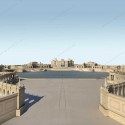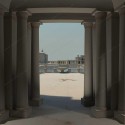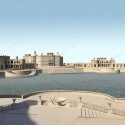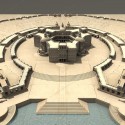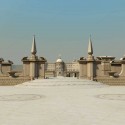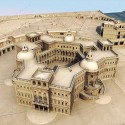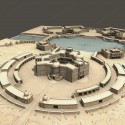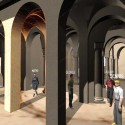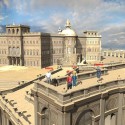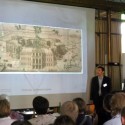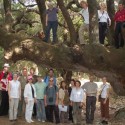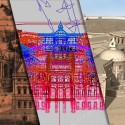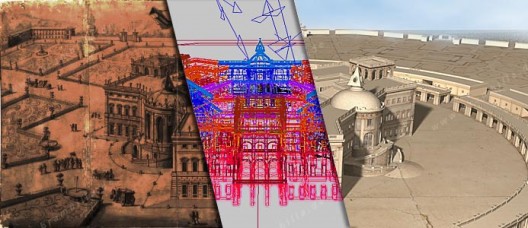
3D-Bridge – Transferring of Cultural Heritage with New Technology:
Visualization of Filippo Juvarra’s Palace Project and Garden Plan from 1705
Story Episodes
- Introduction (this post)
- Project Outline
- The Sources
- Construction Records: The plans
- Construction Records: The bird’s eye view
- Online Movie
- Download of the original computer model
- Partner Institutes
1. Introduction
Project description and partners
Authors: Elisabeth Kieven, Hermann Schlimme and Guenter Eger
Architect: Filippo Juvarra (1678 – 1736)
Location: Bibliotheca Hertziana, Max Planck Institute for Art History Rome, Italy
Client: Bibliotheca Hertziana, Max Planck Institute for Art History, Financed by the European Commission
Original URL: 3D-Bridge – Transferring cultural heritage with new technology and http://wissensgeschichte.biblhertz.it/3d-bridge-html/
Project Year: 2006
Realtime Model and plan analyzing text: Guenter Eger, archetmedia Germany
Abstract
Objectives: The basis of the project is to study European cultural heritage and to adapt the results among other things to building preservation. The project aims to develop new technological tools for the visualization of cultural heritage. By applying new technologies, European cultural heritage will be translated into the language of the future societies and media literate generations. See the project’s homepage.
The Bibliotheca Hertziana’s contribute to the 3D-Bridge is a project of the visualization of Filippo Juvarra’s design for the Concorso Clementino, held at the Accademia nazionale di San Luca in Roma in 1705: A palace for three noble persons of equal range. The computer model will unfold the conceptual thinking of this important european architect. To allow an individual research of the complex geometrical ensemble, the model will not be rendered as a predefined movie. It will be a virtual environment, so everyone can walk through the model on its own.
Methods
The original plans were scanned and then prepared in Adobe Photoshop for the use as sourcefiles in Autodesk Maya. The textured model was then exported to the Unreal Editor and optimized for realtime presentation.
Juvarra’s original plans show some unresolved details or even different solutions for the same constructional element. Some were not fully resolved in his design process. The discoveries and their resulting decisions in building the 3D model are listed in the construction records.
Results
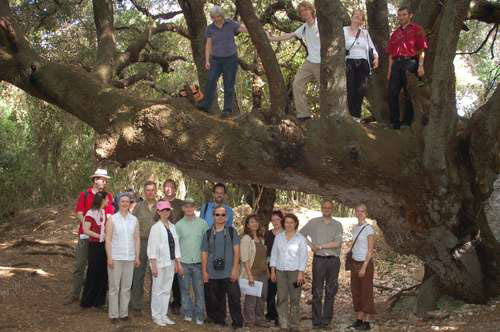
A conference was held in Rome from Monday 19th June 2006 at the Lecture Theatre of The British School at Rome to Tuesday 20th June 2006 at the Villino Stroganoff of Bibliotheca Hertziana, Max Planck Institute for Art History.
In my lecture „The Use of CAD to explore Filippo Juvarra’s design for the Concorso Clementino of 1705“, I presented the results of our group.
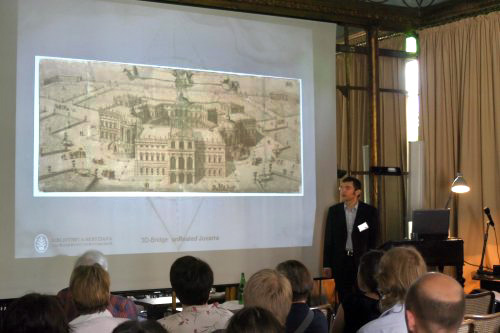
The final virtual reality environment of the Juvarra design is now available as a download from the project’s website. You can also read our lectures and you can also explore Juvarra’s design concept on your own. There are no limitations. You can walk through the whole site and enter the main palace and walk through every single room.
Conclusion
The project succesfully shows, that new technologies can help to research an architects design. Making a 3D model teaches the understanding of spatial concepts,which are underneath the visibility of the geometrical figures of the constructional elements. Only the translation of a 2D drawing into a 3D model discovers every spatial relationship of a design.
 |
This project has received financial support from European Commission’s programe „Culture 2000“. This publication reflects the view only of the author, and the Commission cannot be held responsible for any use which may be made of the information contained therein. |
